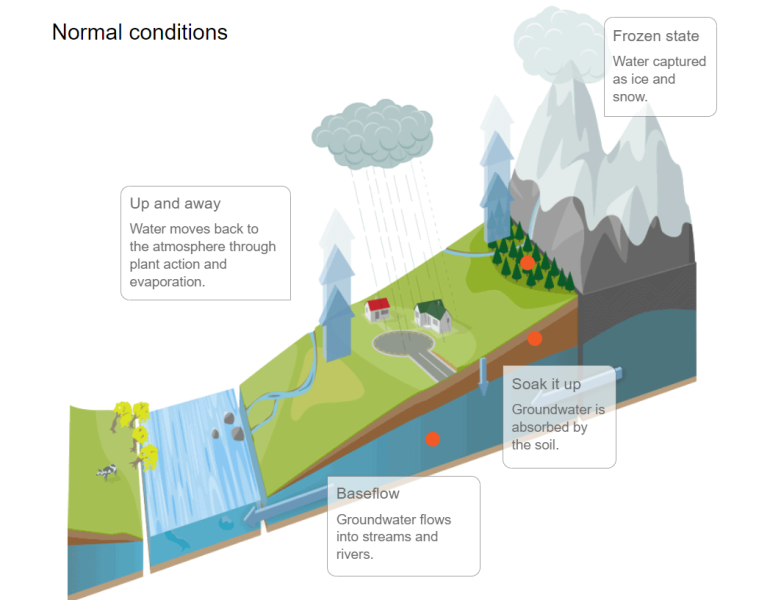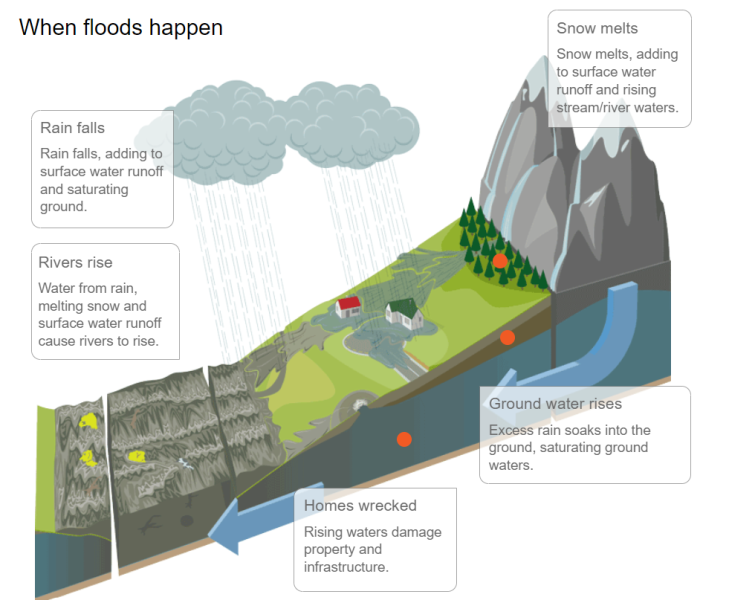We know that flooding can occur during periods of heavy rainfall. But what actually takes places above and below ground, and how is it different from normal rainfall conditions?
What is the difference between flooding and non-flooding rainfall conditions?
In normal conditions (i.e. no rain, or normal rainfall levels):
- frozen state: water is captured as ice and snow
- soak it up: groundwater is absorbed by the soil
- baseflow: groundwater flows into rivers and streams
- up and away: water moves back to the atmosphere through plant action and evaporation.
When floods happen:
- rain falls: rain falls, adding to surface water runoff and saturating ground
- snow melts: snow melts, adding to surface water runoff and rising streams/river waters
- groundwater rises: excess rain soaks into the ground, saturing groundwaters
- rivers rise: water from rain, melting snow and surface water runoff cause rivers to rise
- homes wrecked: rising waters damage property and infrastructure.


